Nov
03
2022
 It’s that time of year again – the time when we debate, yet again, whether or not we should get rid of shifting the clocks twice a year and if so, which time to make permanent, DST or standard time. It does seem like this debate has been heating up in recent years, but it is unclear if we have a political consensus sufficient to make a change. In March of this year the Senate actually passed the Sunshine Protection Act, which would make DST permanent. However, the bill has stalled in the House. In previous years such measures have simply died in committee. This time around it just seems like politicians have more important things on their plate.
It’s that time of year again – the time when we debate, yet again, whether or not we should get rid of shifting the clocks twice a year and if so, which time to make permanent, DST or standard time. It does seem like this debate has been heating up in recent years, but it is unclear if we have a political consensus sufficient to make a change. In March of this year the Senate actually passed the Sunshine Protection Act, which would make DST permanent. However, the bill has stalled in the House. In previous years such measures have simply died in committee. This time around it just seems like politicians have more important things on their plate.
DST was first instituted in the US in 1918 as a wartime measure, to reduce energy costs by extending light in the evening when people are active. The measure was brought back during WWII, after which it was left to the states whether to keep DST. In 1966, however, the Uniform Time Act was passed to encourage all states to adopt DST. Initially DST was instituted for 6 months of the year, from late spring to early fall. In 1974 DST was made year round, but this led to immediate complaints that children were going to school in the morning and parents were going to work in pitch dark, and the measure was repealed the next year. DST was also extended in 2007 until just after Halloween, ostensibly to make trick-or-treaters safer walking the streets. But there have also been significant industry lobbies. The candy industry lobbied hard for DST to extend past Halloween. But many industries, from golf to barbeque supplies, make more money from extended DST. Now DST is 8 months out of 12.
The question remains – which option is best: to keep the current system where we change between DST and Standard Time twice a year, to make DST permanent, or standard time permanent? There is no one objective answer because every option has trade-offs.
Continue Reading »
May
09
2022
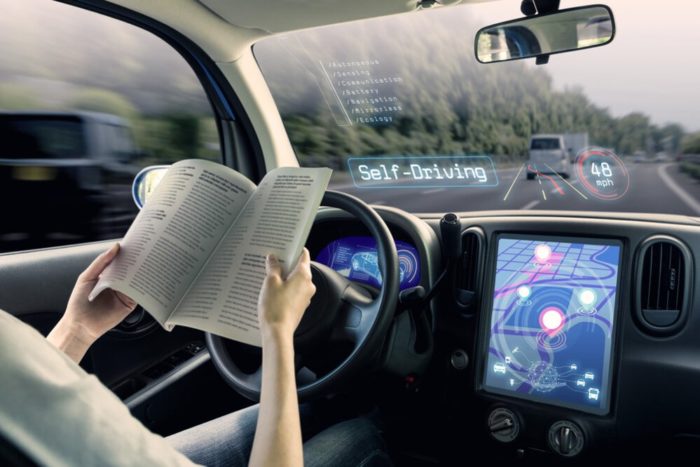 Human behavior is complex and can be very difficult to predict. This is one of the challenges of safe driving – what to do when right of way, for example, is ambiguous, or there are multiple players all interacting with each other? When people learn to drive they first master the rules, and learn their driving skills in controlled situations. As they progress they gain confidence driving in more and more complicated environments. Even still there are about 17,000 car accidents per day in the US.
Human behavior is complex and can be very difficult to predict. This is one of the challenges of safe driving – what to do when right of way, for example, is ambiguous, or there are multiple players all interacting with each other? When people learn to drive they first master the rules, and learn their driving skills in controlled situations. As they progress they gain confidence driving in more and more complicated environments. Even still there are about 17,000 car accidents per day in the US.
It should not have been surprising, therefore, that autonomous or self-driving car technology would also find the task incredibly challenging. Self-driving algorithms not only have to learn the rules, and master the basic technology of sensing the environment with sufficient accuracy and in real time, but also to master increasingly complex and inherently unpredictable environments. A decade ago, when the technology was rapidly advancing, enthusiasts predicted that the technology would be essentially ready for the mass market by the early 2020s – so, now. But they realized that the last 5% or so of performance ability was perhaps more challenging than the first 95%. Some problems become exponentially more difficult to solve when new variables are added (we still haven’t solved the three-body problem). We have seen this with other technologies, like fusion, general AI, speech recognition, and some applications of stem cells, where early predictions were overly optimistic.
This is the challenge that AI specialists are working on now – how to get self-driving car AI systems to perform well-enough to handle the challenging situations that crop up with regularity while driving? The further complicate the issue, these systems have to function in real time, so the solution cannot involve a dramatic increase in computing that would slow down the whole system.
Continue Reading »
Apr
25
2022
 Because I host a popular podcast, I often get solicitations to offer people to be interviewed on the show. They are mostly scientists and science-communicators with a new book to promote. This is actually a helpful resource, although I end up booking very few. One of the reasons for the low hit rate is that the promoters are surprisingly undiscriminating, sometimes laughably so. Recently I received an e-mail regarding “scientist” Tom Paladino:
Because I host a popular podcast, I often get solicitations to offer people to be interviewed on the show. They are mostly scientists and science-communicators with a new book to promote. This is actually a helpful resource, although I end up booking very few. One of the reasons for the low hit rate is that the promoters are surprisingly undiscriminating, sometimes laughably so. Recently I received an e-mail regarding “scientist” Tom Paladino:
“He’d appreciate the opportunity to come on your show, The Skeptics Guide to the Universe, to explain what Scalar Light is and how it can be used to help heal the human body naturally.”
After taking a look at his website I questioned whether Paladino knows what scalar light is, although it may be different than Scalar Light. Apparently scalar light was something researched by Nikola Tesla – in my opinion invoking his name is an extremely reliable marker for pseudoscience and chicanery, up there with Galileo.
Let’s start with the actual science – what is “scalar light” or more generally, a scalar energy field? In physics the word “scalar” just means a physical property that has a specific magnitude value at each point in space, and that value is independent of perspective or frame of reference. Temperature is scalar because you can give a magnitude value at every point, but direction is irrelevant. Scalar properties are distinguished from vector properties, which have both magnitude and direction. Earth’s gravitational field is a vector energy field, because each point in space has a specific magnitude and direction.
Is light a scalar or vector phenomenon? Well, the speed of light (c) is always the same regardless of the observer, so it is a scalar phenomenon (the speed of light only refers to its magnitude). The velocity of light refers to its magnitude and direction, so it is a vector quality. From the perspective of physics, then, “scalar light” refers to the speed of light. Or it’s redundant – it’s just light, which has a scalar property (speed).
Continue Reading »
Feb
18
2022
 Most people I know, whether personally or as my patients, want to take positive steps to improve their health and quality of life. Unfortunately, many people who make a decision to get healthier rely on information in the popular culture and being promoted by the self-help industry. Much of this information is wrong or misleading. When people want to improve their diet, they often tell me they only eat organic whole foods, or perhaps they go paleo or raw if they are really motivated. But these changes are worthless – just expensive distractions.
Most people I know, whether personally or as my patients, want to take positive steps to improve their health and quality of life. Unfortunately, many people who make a decision to get healthier rely on information in the popular culture and being promoted by the self-help industry. Much of this information is wrong or misleading. When people want to improve their diet, they often tell me they only eat organic whole foods, or perhaps they go paleo or raw if they are really motivated. But these changes are worthless – just expensive distractions.
Older patients concerned about their memory and cognitive function tend to focus on two things, diet and “brain games”. As I have discussed before, brain games basically don’t work. If you play Wordle, you get better at Wordle. That’s it. Diet is a little more complicated, as some people, especially older adults, may be deficient in certain nutrients, particularly B12. Even here people get distracted by the notion of “super foods” or some magical supplement. The reality is, for most people, just have a good well-rounded diet and eat plenty of fruits and vegetables. Vitamin B12, however, largely comes from meat. It is also a difficult vitamin to absorb (it requires a cofactor) and some people have impaired absorption or it wanes as they get older. The solution here is to get regular checkups with your PMD, who will check your B12 level and supplement if necessary. You may even need a B12 shot if your GI absorption is really impaired.
But we haven’t even discussed the factors that have perhaps the greatest effect on the cognitive function of healthy adults. I emphasize healthy, because if someone has a disease that affects their brain function that is a separate issue. Perhaps the most significant single factor affecting memory is healthy adults is sleep. Often sleep gets difficult as we get older for various reasons. People become accustomed to chronically poor sleep, and underestimate its affect on their cognitive function and memory. So step one should always be – fix your sleep. You may be able to do this with improved sleep hygiene, but if this doesn’t fix the problem again you need to see your doctor. You may have a sleep disorder, such as sleep apnea (difficulty breathing when asleep), and this will wreak havoc on your memory. Some people also struggle with anxiety and depression, and this can impair memory and focus. So address those issues as well.
Continue Reading »
Feb
08
2022
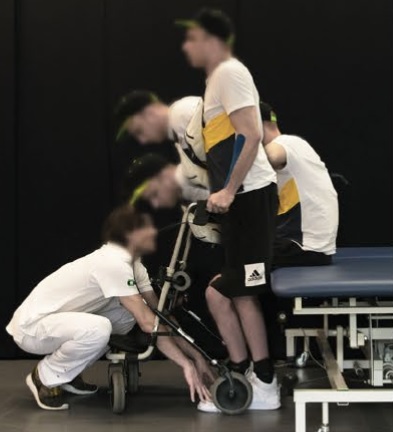 In my opinion one of the most encouraging future technologies that we are developing today is hacking the nervous system through electromagnetic recording and stimulation. Nervous system signals are ultimately electrical, which is convenient because we have an entire mature technology based on controlling the flow of electricity. We also have increasingly powerful computers and software algorithms to both read and recreate these electrical signals. The actual limiting factor with this technology at present is the hardware – the electrodes we use to interface with nervous tissue. As this technology advances, so do our applications.
In my opinion one of the most encouraging future technologies that we are developing today is hacking the nervous system through electromagnetic recording and stimulation. Nervous system signals are ultimately electrical, which is convenient because we have an entire mature technology based on controlling the flow of electricity. We also have increasingly powerful computers and software algorithms to both read and recreate these electrical signals. The actual limiting factor with this technology at present is the hardware – the electrodes we use to interface with nervous tissue. As this technology advances, so do our applications.
That is exactly the incremental advance that is now being reported, with specific reference to severe spinal cord injury. However, I think that much of the mainstream reporting is missing some important details. First let’s discuss the actual science – published in Nature is a report on three proof-of-concept cases using spinal cord stimulation to allow those with spinal cord injury to walk. This is old technology, which has been developed over the last several decades, called EES – Epidural Electrical Stimulation. So it is nothing new. The report is about a small but meaningful improvement in the hardware.
The three subjects all had spinal cord injury with complete motor and sensory loss below the level of the injury, which means essentially that they could not move or feel their legs at all. The technology implants electrodes on the dorsal roots below the injury. These are are the trunks of spinal nerves that deliver sensory information to the spinal cord. Why would you stimulate sensory nerves to make the muscles move? Because those signals get into the spinal cord (which is a physically small space) where they stimulate motor neurons. Neuroscientists have learned how to arrange these electrodes to guide these electrical signals to where they want, and keep them from spreading to motor neurons on the other side or ones they don’t want to stimulate. By taking this route they are able to stimulate a group of motor neurons that are typically involved on a motor task, like walking. If they instead stimulated the ventral motor root that would just make the entire leg contract, without having it move in a useful way.
Continue Reading »
Sep
07
2021
 The International Space Station (ISS) is getting old. Construction started on the station in 1998 and it has been continuously occupied since November 2000. Construction took 10 years, 30 missions, 15 space agencies, and 15 countries to complete. The lifespan of the modules that make up the ISS was originally set at 15 years, but this has been extended to 30 years, with the ISS commissioned through 2028. It is unclear if it will be extended beyond that.
The International Space Station (ISS) is getting old. Construction started on the station in 1998 and it has been continuously occupied since November 2000. Construction took 10 years, 30 missions, 15 space agencies, and 15 countries to complete. The lifespan of the modules that make up the ISS was originally set at 15 years, but this has been extended to 30 years, with the ISS commissioned through 2028. It is unclear if it will be extended beyond that.
Throughout this time the station has been repaired and upgraded, but the basic infrastructure remains. There is a certain amount of unavoidable aging that happens to hull, maintaining pressure in the challenging conditions of low Earth orbit. Without environmental control, temperature variation on the ISS would range from 250 degrees F on the sun-facing side and -250 F on the sun-opposite side. Temperature variation like this tends to fatigue material. It is therefore unclear what will happen to the ISS, and to orbiting space stations, after 2028.
The ISS cost $150 billion to build, and $3.5 billion per year to maintain. The ROI has largely been research in microgravity, including researching the ability to maintain extended stays in space. NASA plans to deorbit the ISS after 2028, and has no plans for a replacement. Its vision is to largely cede low Earth orbit to private companies. There are at least two companies with plans for their own stations, Axiom and Bigelow Aerospace. Both companies are planning modules that will attach to the ISS, and then detach and become their own free-floating stations once the ISS is decommissioned.
One of the ISS partners, Russia, has commitments to 2025. It is increasingly looking like they plan on pulling out at that time, and some speculate this is because they wish to focus on their own station. They are starting to warn about the age and condition of the ISS, especially their own modules. In July the Nauka research module’s thrusters fired accidentally, temporarily throwing the ISS out of its usual orientation. There have also been several air leaks in the Russian Zvezda service module where some of the crew sleeps. Russia is now warning that 80% of the components on their modules are past the expiration date, and that small cracks are appearing and may spread catastrophically.
Continue Reading »
Aug
03
2021
A lot of people have noticed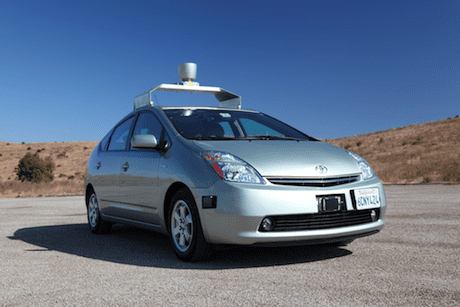 that the self-driving car revolution has been…delayed. For the last decade predictions of when the technology would be ready for mass adoption were converging on the 2020s, beginning early in the decade. In this 2010 article, the prediction was – at least 8 years. Also, “US Secretary of Transportation Anthony Foxx declared in 2016 that we’d have fully autonomous cars everywhere by 2021.” Since then the technology has advanced tremendously, but has not quite crossed the threshold of fully autonomous vehicles. We are stuck in the “driver-assist” stage. Right now you can get a Tesla with the driver-assist package which you can use to summon your car from its parking space, and to assist during driving to help avoid accidents. But the driver must always be attentive and at the wheel. Fully autonomous driving is not yet a reality. What happened?
that the self-driving car revolution has been…delayed. For the last decade predictions of when the technology would be ready for mass adoption were converging on the 2020s, beginning early in the decade. In this 2010 article, the prediction was – at least 8 years. Also, “US Secretary of Transportation Anthony Foxx declared in 2016 that we’d have fully autonomous cars everywhere by 2021.” Since then the technology has advanced tremendously, but has not quite crossed the threshold of fully autonomous vehicles. We are stuck in the “driver-assist” stage. Right now you can get a Tesla with the driver-assist package which you can use to summon your car from its parking space, and to assist during driving to help avoid accidents. But the driver must always be attentive and at the wheel. Fully autonomous driving is not yet a reality. What happened?
In retrospect it all seems completely predictable, because we have been here so many times before. This pattern does not necessarily happen with every technology, but it is extremely common, especially for new and complex technology. We have seen this with fusion reactors, artificial general intelligence, gene therapy, stem-cell therapy, the hydrogen economy, and flying cars. There are some common themes that keep cropping up. One is the tendency to overestimate short term progress, while underestimating long term progress. This pattern, in turn, results from some underlying tendencies and cognitive biases.
I think one of the most important is that we tend to default to extrapolating linearly into the future. So we think – if we have made this much progress between 2000 and 2010, then we should make similar progress between 2010 and 2020, and that’s when we will cross the finish line. The problem is, technological progress is not always linear. There is a more complex relationship, which can make net progress both faster and slower than we predict. This is because technological progress can be geometric, rather than linear. But at the same time, challenges can be geometrically difficult, so there is diminishing returns. These are competing geometric issues, and how they sort out can be difficult to extrapolate.
Continue Reading »
Apr
20
2021
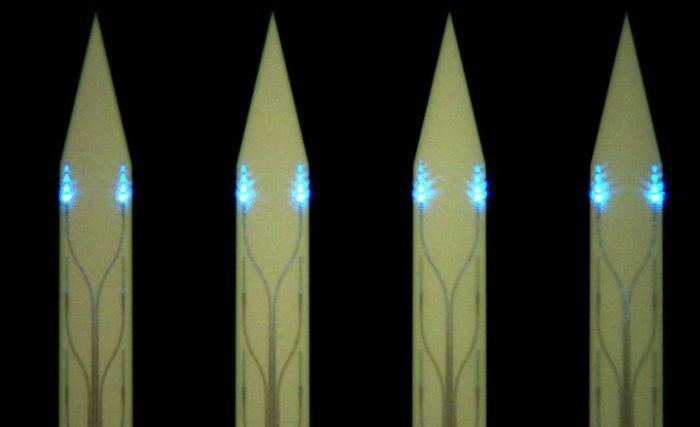 One major factor in the progress of our understanding of how brains function is the ability to image the anatomy and function of the brain in greater detail. At first our examination of the brain was at the gross anatomy level – looking at structures with the naked eye. With this approach we were able to divide the brain in to different areas that were involved with different tasks. But it soon became clear that the organization and function of the brain was far more complex than gross examination could reveal. The advent of microscopes and staining techniques allowed us to examine the microscopic anatomy of the brain, and see the different cell types, their organization into layers, and how they network together. This gave us a much more detailed map of the anatomy of the brain, and from examining diseased or damaged brains we could infer what most of the identifiable structures in the brain did.
One major factor in the progress of our understanding of how brains function is the ability to image the anatomy and function of the brain in greater detail. At first our examination of the brain was at the gross anatomy level – looking at structures with the naked eye. With this approach we were able to divide the brain in to different areas that were involved with different tasks. But it soon became clear that the organization and function of the brain was far more complex than gross examination could reveal. The advent of microscopes and staining techniques allowed us to examine the microscopic anatomy of the brain, and see the different cell types, their organization into layers, and how they network together. This gave us a much more detailed map of the anatomy of the brain, and from examining diseased or damaged brains we could infer what most of the identifiable structures in the brain did.
But still, we were a couple of layers removed from the true level of complexity of brain functioning. Electroencephalography gave us the ability not to look at brain anatomy but function – we could detect the electrical activity of the brain with a series of electrodes in real time. This gave us good temporal resolution of function, and a good window into overall brain function (is the brain awake, asleep, or damaged) but very poor spatial resolution. This has improved in recent decades thanks to computer analysis of EEG signals, which can map brain function in higher detail, but is still very limited.
CT scans and later MRI scans allow us to image brain anatomy, even deep anatomy, in living creatures. In addition we can see some pathological details like edema, bleeding, scar tissue, iron deposition, or inflammation. With detailed imaging we could see the lesion while still being able to examine a living patient (rather than having to wait until autopsy to see the lesion). As MRI scans advanced we could also correlate non-pathological anatomical features with neurological function (such as skills or personality), giving us yet another window into brain function.
Continue Reading »
Apr
16
2021
Yet another study shows the benefits of delaying the start time for High School students. This study also looked at middle school and elementary school students, had a two year follow up, and including both parent and student feedback. In this study: “Participating elementary schools started 60 minutes earlier, middle, 40-60 minutes later, and high school started 70 minutes later,” and found
shows the benefits of delaying the start time for High School students. This study also looked at middle school and elementary school students, had a two year follow up, and including both parent and student feedback. In this study: “Participating elementary schools started 60 minutes earlier, middle, 40-60 minutes later, and high school started 70 minutes later,” and found
Researchers found that the greatest improvements in these measures occurred for high school students, who obtained an extra 3.8 hours of sleep per week after the later start time was implemented. More than one in ten high school students reported improved sleep quality and one in five reported less daytime sleepiness. The average “weekend oversleep,” or additional sleep on weekends, amongst high schoolers dropped from just over two hours to 1.2 hours, suggesting that with enough weekday sleep, students are no longer clinically sleep deprived and no longer feel compelled to “catch up” on weekends. Likewise, middle school students obtained 2.4 additional hours of sleep per week with a later school start time. Researchers saw a 12% decrease in middle schoolers reporting daytime sleepiness. The percent of elementary school students reporting sufficient sleep duration, poor sleep quality, or daytime sleepiness did not change over the course of the study.
This adds to prior research which shows similar results, and also shows that student academic performance and school attendance improves. For teens their mood improves, their physical health improves, and the rate of car crashes decreases. So it seems like an absolute no-brainer that the typical school start time should be adjusted to optimize these outcomes. Why isn’t it happening? Getting in the way are purely logistical problems – synchronizing school start times with parents who need to go to work, sharing buses among elementary, middle, and high school, and leaving enough time at the end of the day for extracurricular activities. But these are entirely solvable logistical hurdles.
Continue Reading »
Apr
08
2021
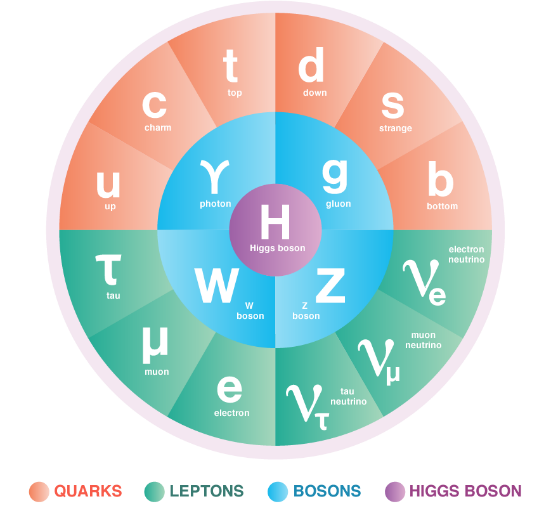 Physicists are all verklempt. Prof Ben Allanach, from Cambridge University said:
Physicists are all verklempt. Prof Ben Allanach, from Cambridge University said:
“This is the moment that I have been waiting for and I’m not getting a lot of sleep because I’m too excited.”
What could have scientists so excited? A muon that wobbled a little faster than it’s supposed to. In an experiment at the Fermi National Accelerator Laboratory (Fermilab) in Batavia, Illinois (the Muon g-2 experiment), physicists accelerated the subatomic particle muons and exposed them to a magnetic field. Muons are like electrons but 200 times heavier. They have a charge so should respond to a magnetic field by wobbling as they swing around the accelerator, and they did, but they did it a little faster than the standard model predicts they should. It was as if a force not contained within the standard model was acting on them. This experiment adds to another in Japan and yet another at the LHC also hinting at new physics. The statistical power of the Fermi results is at 4.1 sigma, or a 1 in 40,000 probability of being by chance alone. Five sigma (one chance in 3.5 million) is the threshold when the physics community accepts a claim as proven.
This is a big deal, perhaps even bigger than when the LHC confirmed the existence of the Higgs boson. That confirmed a prediction of the standard model, which is nice, but does not point the way to new physics. What physicists desperately want to do is break the standard model, to find some provable phenomenon that violates the standard model, which should lead to the discovery of a new particle or perhaps even a new force outside the current model. This is what would create the next great discovery in physics and perhaps solve some enduring mysteries, like what the hell is responsible for the acceleration of the expansion of the universe?
Continue Reading »
 It’s that time of year again – the time when we debate, yet again, whether or not we should get rid of shifting the clocks twice a year and if so, which time to make permanent, DST or standard time. It does seem like this debate has been heating up in recent years, but it is unclear if we have a political consensus sufficient to make a change. In March of this year the Senate actually passed the Sunshine Protection Act, which would make DST permanent. However, the bill has stalled in the House. In previous years such measures have simply died in committee. This time around it just seems like politicians have more important things on their plate.
It’s that time of year again – the time when we debate, yet again, whether or not we should get rid of shifting the clocks twice a year and if so, which time to make permanent, DST or standard time. It does seem like this debate has been heating up in recent years, but it is unclear if we have a political consensus sufficient to make a change. In March of this year the Senate actually passed the Sunshine Protection Act, which would make DST permanent. However, the bill has stalled in the House. In previous years such measures have simply died in committee. This time around it just seems like politicians have more important things on their plate.
 Human behavior is complex and can be very difficult to predict. This is one of the challenges of safe driving – what to do when right of way, for example, is ambiguous, or there are multiple players all interacting with each other? When people learn to drive they first master the rules, and learn their driving skills in controlled situations. As they progress they gain confidence driving in more and more complicated environments. Even still there are about
Human behavior is complex and can be very difficult to predict. This is one of the challenges of safe driving – what to do when right of way, for example, is ambiguous, or there are multiple players all interacting with each other? When people learn to drive they first master the rules, and learn their driving skills in controlled situations. As they progress they gain confidence driving in more and more complicated environments. Even still there are about  Because I host
Because I host  Most people I know, whether personally or as my patients, want to take positive steps to improve their health and quality of life. Unfortunately, many people who make a decision to get healthier rely on information in the popular culture and being promoted by the self-help industry. Much of this information is wrong or misleading. When people want to improve their diet, they often tell me they only eat organic whole foods, or perhaps they go paleo or raw if they are really motivated. But these changes are worthless – just expensive distractions.
Most people I know, whether personally or as my patients, want to take positive steps to improve their health and quality of life. Unfortunately, many people who make a decision to get healthier rely on information in the popular culture and being promoted by the self-help industry. Much of this information is wrong or misleading. When people want to improve their diet, they often tell me they only eat organic whole foods, or perhaps they go paleo or raw if they are really motivated. But these changes are worthless – just expensive distractions. In my opinion one of the most encouraging future technologies that we are developing today is hacking the nervous system through electromagnetic recording and stimulation. Nervous system signals are ultimately electrical, which is convenient because we have an entire mature technology based on controlling the flow of electricity. We also have increasingly powerful computers and software algorithms to both read and recreate these electrical signals. The actual limiting factor with this technology at present is the hardware – the electrodes we use to interface with nervous tissue. As this technology advances, so do our applications.
In my opinion one of the most encouraging future technologies that we are developing today is hacking the nervous system through electromagnetic recording and stimulation. Nervous system signals are ultimately electrical, which is convenient because we have an entire mature technology based on controlling the flow of electricity. We also have increasingly powerful computers and software algorithms to both read and recreate these electrical signals. The actual limiting factor with this technology at present is the hardware – the electrodes we use to interface with nervous tissue. As this technology advances, so do our applications. The International Space Station (ISS) is getting old. Construction started on the station in 1998 and it has been continuously occupied since November 2000. Construction took 10 years, 30 missions, 15 space agencies, and 15 countries to complete. The lifespan of the modules that make up the ISS was originally set at 15 years, but this has been extended to 30 years, with the ISS commissioned through 2028. It is unclear if it will be extended beyond that.
The International Space Station (ISS) is getting old. Construction started on the station in 1998 and it has been continuously occupied since November 2000. Construction took 10 years, 30 missions, 15 space agencies, and 15 countries to complete. The lifespan of the modules that make up the ISS was originally set at 15 years, but this has been extended to 30 years, with the ISS commissioned through 2028. It is unclear if it will be extended beyond that.
 One major factor in the progress of our understanding of how brains function is the ability to image the anatomy and function of the brain in greater detail. At first our examination of the brain was at the gross anatomy level – looking at structures with the naked eye. With this approach we were able to divide the brain in to different areas that were involved with different tasks. But it soon became clear that the organization and function of the brain was far more complex than gross examination could reveal. The advent of microscopes and staining techniques allowed us to examine the microscopic anatomy of the brain, and see the different cell types, their organization into layers, and how they network together. This gave us a much more detailed map of the anatomy of the brain, and from examining diseased or damaged brains we could infer what most of the identifiable structures in the brain did.
One major factor in the progress of our understanding of how brains function is the ability to image the anatomy and function of the brain in greater detail. At first our examination of the brain was at the gross anatomy level – looking at structures with the naked eye. With this approach we were able to divide the brain in to different areas that were involved with different tasks. But it soon became clear that the organization and function of the brain was far more complex than gross examination could reveal. The advent of microscopes and staining techniques allowed us to examine the microscopic anatomy of the brain, and see the different cell types, their organization into layers, and how they network together. This gave us a much more detailed map of the anatomy of the brain, and from examining diseased or damaged brains we could infer what most of the identifiable structures in the brain did.
 Physicists are all verklempt.
Physicists are all verklempt. 




